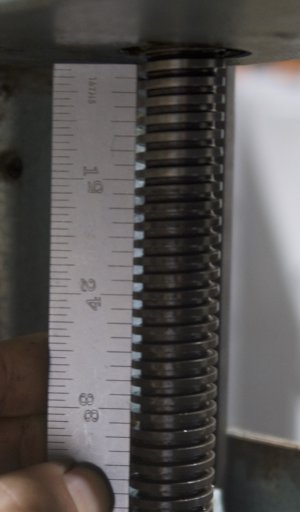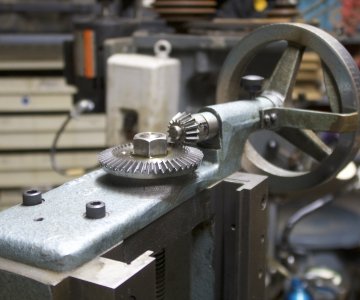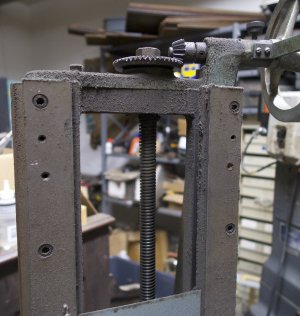Does anyone know of a source for 3/4" x 6 2/3 TPI acme or square thread leadscrew and nut? I'm working on a Sanford MG surface grinder that had a very hard life and the elevation leadscrew needs to be replaced. I nearly bought a 7TPI but then looked more closely at the measurement and realized this wasn't going to be as easy as I had hoped.
I guess they used this oddball thread to get 0.050"/rev of the handwheel with their particular ratio on the bevel gears. I'm not enthusiastic about re-engineering the entire downfeed mechanism, nor am I excited about sourcing a potentially expensive custom screw for a very worn out grinder, so I'm hoping someone knows of a source for these. If I'm not mistaken, Sanford was not the only manufacturer that used this pitch.
Worst case I guess I'll be putting in a 7TPI and living with meaningless handwheel graduations until I get around to a different solution.
Thanks for any suggestions!
I guess they used this oddball thread to get 0.050"/rev of the handwheel with their particular ratio on the bevel gears. I'm not enthusiastic about re-engineering the entire downfeed mechanism, nor am I excited about sourcing a potentially expensive custom screw for a very worn out grinder, so I'm hoping someone knows of a source for these. If I'm not mistaken, Sanford was not the only manufacturer that used this pitch.
Worst case I guess I'll be putting in a 7TPI and living with meaningless handwheel graduations until I get around to a different solution.
Thanks for any suggestions!



